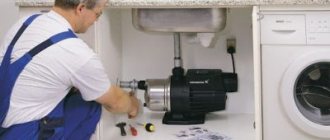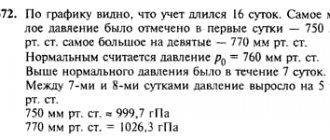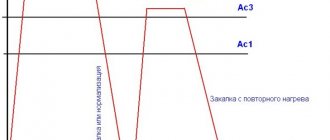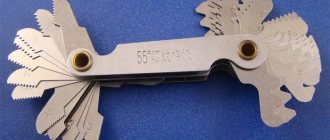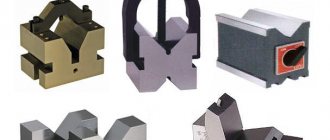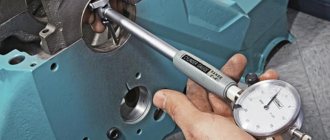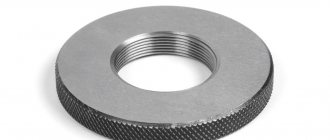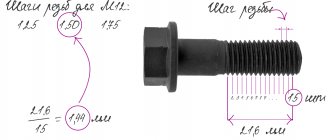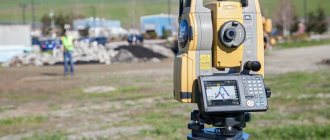Modern instrument making offers a wide range of temperature meters - the devices have a variety of configurations, operating principles and areas of operation. Professional and accurate thermometers are indispensable in almost any area of activity: they are used to monitor climate indicators, when studying the condition of materials, and assessing the properties of substances. Thermometers are also in demand in everyday life, but they are especially widespread in industry and science.
Application of thermometers in industry and laboratories
In industrial sectors such as metallurgy, pulp and paper production, agriculture, pharmaceuticals, animal husbandry, thermometers are needed to measure temperature:
- liquids;
- solutions;
- gases;
- solids;
- surfaces;
- bulk materials;
- melts, etc.
Professional thermometers are especially in demand in industries where it is necessary to control the temperature of raw materials, technological processes or evaluate the properties of finished products. Such facilities include food manufacturing enterprises, chemical and metallurgical plants, agricultural organizations, etc. It is also necessary to control technological processes in laboratory testing conditions. Thermometers are used in quality control laboratories, environmental analytical centers, and technological departments of enterprises.
Each field of activity requires certain types of thermometers. These meters differ in their operating principle and scope of application.
Metastatic thermometer
The device is designed to have a variable scale. The accuracy of determining indicators is high - in the range of up to 5°C. The permissible range of the scale is from -20 to +150°C. You can change the range by pouring a certain volume of mercury from the capillary into an additional container.
Operating principle of temperature meters
The measurement of temperature parameters can be based on various physical processes. Depending on the measurement technique, all types of thermometers are divided into 2 classes: contact and non-contact.
1. Contact thermometers - the operating principle of such devices is based on the need for thermal contact between the thermometer sensor and the medium whose temperature is measured. The thermometer with sensor is suitable for working with gaseous media, liquids, solid or bulk products;
Contact thermometers according to the measurement principle are divided into:
- Resistance thermometers – record the electrical resistance of substances, which changes depending on changes in ambient temperature. A resistance thermometer consists of a sensing element and an external (protective) fitting. Copper and platinum are used as materials for the sensitive element. These materials were chosen because their resistance is noticeably affected by changes in ambient temperature (high temperature coefficient of resistance). Resistance thermometers are often used in monitoring and warning systems;
- electronic thermocouples – designed to measure the thermoelectromotive force arising under the action of the generated current;
- manometric - measurements are based on the dependence of temperature on gas pressure; the pressure of a liquid or gas changes with temperature changes. The sensitive element in such devices is a thermal cylinder, which is connected to a pressure gauge;
2. Non-contact thermometers are those thermometers for which there is no need for thermal contact between the medium and the device, but rather measurements of the own thermal or optical radiation of the measured object are sufficient.
Based on the measurement principle, non-contact thermometers are divided into:
- radiation pyrometers;
- radiometers;
- thermal imagers.
Glass Type Liquid Devices
These are common devices, characterized by a simple system of counting indicators. The measurement accuracy is quite high with an acceptable range from -190 to +10000C.
The operating mechanism is based on the expansion of the liquid in the reservoir. When this tank heats up, it will rise, as can be seen in the photo of the temperature meters.
Mercury is most often used as a liquid, but there are models with toluene, ethyl alcohol, and pentane. Disadvantages - fragility of the structure, unclear scale, lack of ability to accumulate data.
Classification of thermometers by design
Depending on the materials used in the measuring device, thermometers are:
- liquid - made in the form of a body with a liquid, which is characterized by thermal expansion (most often they use mercury or alcohol). The flask with liquid is equipped with a measuring scale. It tracks the movement of a liquid, which expands when heated and contracts when cooled;
- gas thermometers - the operating principle of thermometers is similar to liquid thermometers, but an inert gas is used as a filling substance in the flask. The gaseous substance has an increased temperature range, which makes it possible to use these thermometers when studying hot materials;
- mechanical - based on the principle of deformation of a metal spiral or bimetallic tape. Such thermometers are equipped with a needle and look like a watch dial. Mechanical thermometers are most often used in cars and specialized equipment;
- electrical - measure the resistance level of a metal conductor (usually copper or platinum) at different temperatures;
- thermoelectric - high-precision meters are based on two conductors that form a junction, when heated, a thermoelectric current arises;
- fiber optic – fiber optic sensors through which the light beam passes change their volume under the influence of temperatures, at which time the device records the refraction of light. Mathematical processing of the spectral shift of light provides information about the measured temperature.
Functionality of measuring instruments
The devices that are used to determine the temperature perform several basic functions, so it is important to take these points into account when determining which meter is best:
- measurements of the actual temperature in the environment;
- visual reflection of temperature level;
- recording the results obtained in the device’s memory;
- alarm about violation of the specified temperature range;
- data transfer to working equipment.
Complex units equipped with special temperature sensors are also capable of regulating and maintaining a temperature regime recorded by software.
Resistive RTD sensors
The most commonly used strain gauge material is platinum (Pt), but nickel (Ni) or copper (Cu) thermistors are also available.
- Standard sensors are available as Pt100, Pt500 or Pt1000, which means their nominal resistance at 0 C is 100 Ohm, 500 Ohm or 1000 Ohm respectively.
- Given that RTD sensors are considered the most accurate, their measurement accuracy is standardized, and A accordingly.
- They are classified according to accuracy class B. In practice, other accuracy classes can be found, namely: AA, C, 1⁄3B or 1/10B
Temperature sensors in the thermistor
Variants of thermistors made from materials with a high temperature coefficient by sintering. We distinguish between negative temperature NTC sensors, for which increasing temperature reduces the resistance of the sensor, and positive temperature PTC thermistors.
Thermistors are characterized by high sensitivity in the range of 50 C ÷ 125 C, but over a wider range their thermometric characteristics are definitely non-linear, which makes it difficult to convert changes in resistance into temperature and, therefore, reduces the accuracy of the measurement. Power supply and measurement circuits are the same as for platinum RTD sensors.
Thermoelectric temperature sensor
The Seebeck effect has been exploited, the essence of which is that if two different metals or their alloys are connected in two places, and the points of connection are at different temperatures, a force is created between the points of connection.
The magnitude of the force depends on the temperature difference between the connection points and the type of connection points. The measuring point is the hot spot and the free ends of the cables correspond to the test point.
- The magnitude of the thermoelectric force depends on the temperature difference and the Seebeck coefficient of the metals that form the connection points of the thermocouple.
- In practice, compensation (CJC) is performed by using an additional temperature measurement T2 to accurately measure temperature changes at the free ends of the thermocouple.
- This measurement must be made at the connection test point using a thermistor, thermistor, or optional thermocouple connections.
By proper selection of terminals (connection points), a fairly high sensitivity, expressed in mV/C, can be achieved. Table 2 shows the most common metal configurations that make up thermocouple measuring devices, as well as the electrical connection parameters standardized in the current EN 60584 standard.
The measurement accuracy of thermocouples depends on class 1 or 2 and the measuring range. Class 1 sensors have an accuracy of ±1.5 C over the main measurement range. T-type thermocouple (Cu-CuNi) has the highest accuracy in the range from -40 C to + 125 C with a value of ±0.5 C.
Semiconductor thermometer
The design contains three sensors that measure temperature in different environments. Another structure is also possible - 1 sensor with three replaceable nozzles.
Algorithm for measuring body temperature
It is impossible to measure the temperature of any body (not to be confused with the human body) in the same way as many physical quantities (length, mass, volume) are measured, since in nature there is no standard or sample unit of this quantity. Therefore, determining the temperature of a substance comes down to comparison by observing the change in the physical properties of another, so-called thermometric substance, which, when in contact with a heated body, enters into thermal equilibrium with it after some time.
The method of measuring body temperature does not give the absolute value of the temperature of the heated medium, but only indicates the temperature difference relative to the initial temperature of the thermometric substance, conventionally taken as zero.
During the heating process, both the internal energy of a substance and almost all its physical properties change. To measure temperature, only those properties are selected that clearly change with temperature, are not influenced by other factors, and are relatively easy to accurately measure. The following properties of working substances most precisely fall within these requirements:
- Volume expansion.
- Change in pressure in a closed volume.
- Change in electrical resistance.
- The emergence of thermoelectromotive force and radiation intensity.
All these properties form the basis for the design of temperature measuring devices.
